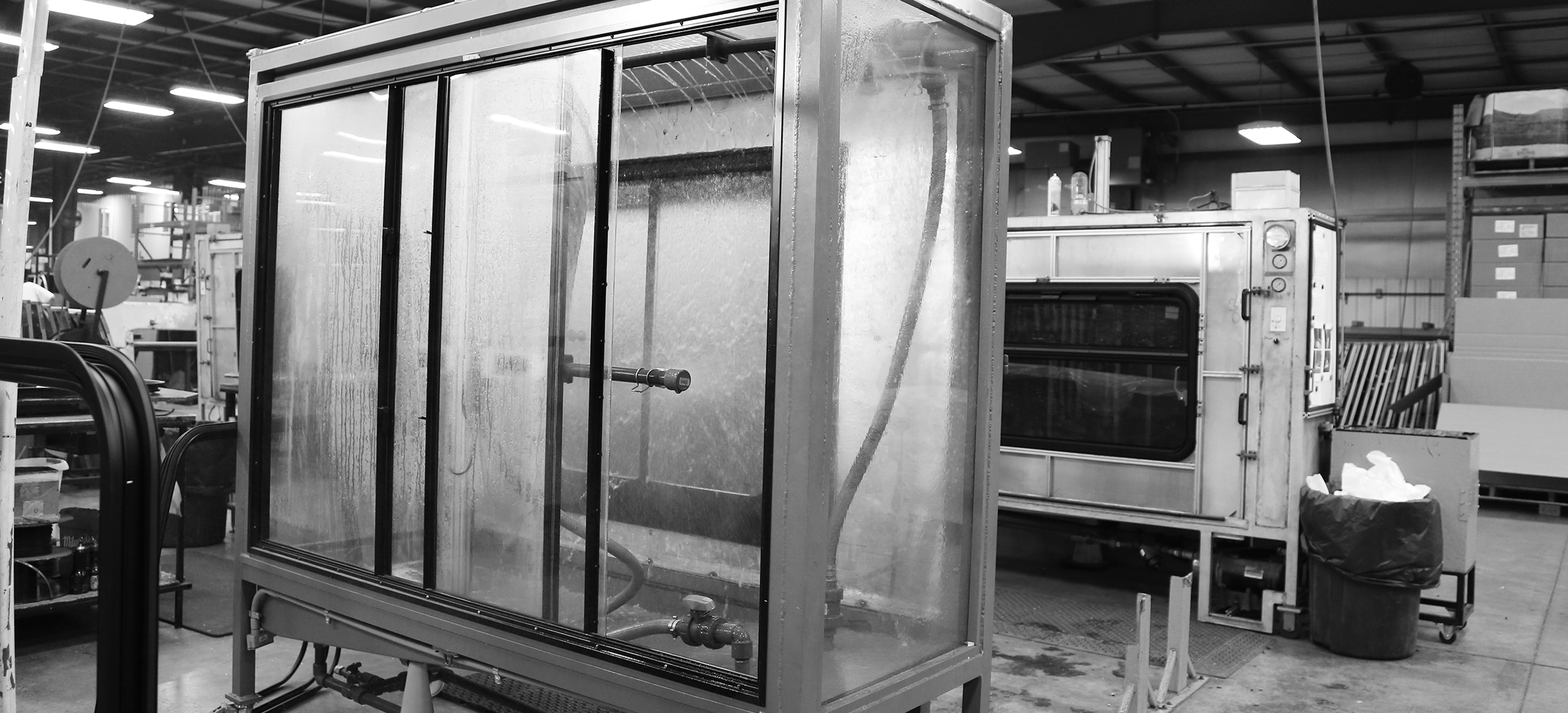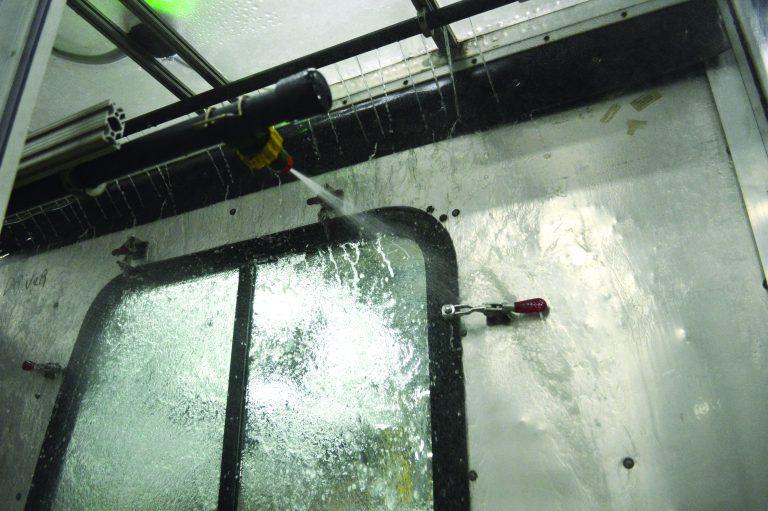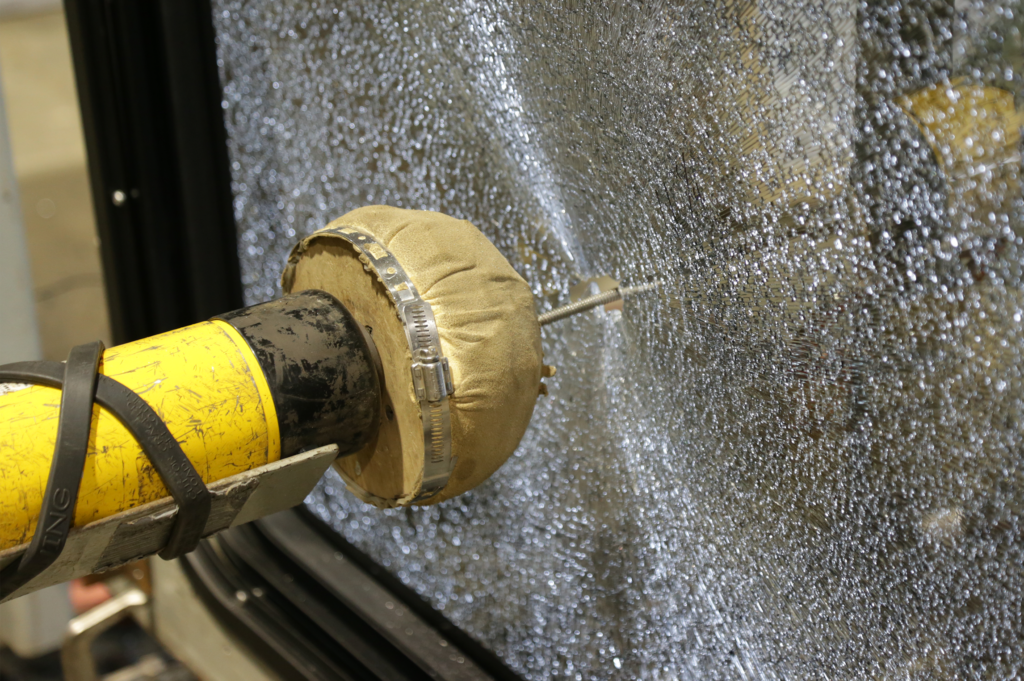
Quality & Testing
When selecting a window it is important to make sure the window meets safety standards, such as the Federal Motor Vehicle Safety Standards (FMVSS). The tables below break down the seven basic standards which affect transit bus vehicles.
Water Testing
At AROW Global, we ensure that every product produced is capable of withstanding our rigorous water test program. Each design is thoroughly tested using our state-of-the-art in-house testing facility to ensure the product meets our high-performance standards. Statistical test sampling ensures adherence to design performance.
- Dual-pump design with comprehensive pressure monitoring ensures consistent flow and pressure.
- Multi-nozzle spray bar results in comprehensive coverage and saturation.
- Adjustable test plane permits vehicle hill simulation.
- Upper cascade rail ensures steady flow and coverage throughout the test.
- Standard test parameters exceed normal OEM specifications and can be adjusted for more rigorous requirements.

Egress/Push-out Testing

AROW Global tests our windows in accordance with Federal Motor Vehicle Safety Standard (FMVSS) 217. This standard establishes requirements for the retention of windows in buses, and criteria for operating forces, opening dimensions, and markings for bus emergency exits. The purpose of this standard is to minimize the likelihood of occupants being thrown from the bus and to provide a means of readily accessible emergency egress.
The testing occurs in a certified laboratory and requires that an increasing force be applied to the center of, and perpendicular to, the inside surface of the window glazing (glass, acrylic or polycarbonate). The test is terminated when one of the following occurs:
- A force of 1200 lbs is reached (pass)
- The glass shatters, or cracks have formed in at least 80 percent of the window glazing (pass)
- The window glazing deflects beyond a calculated limit, depending on the size of the window glazing (pass)
- An opening develops, that permits the passage of a 4-inch diameter sphere (fail)





